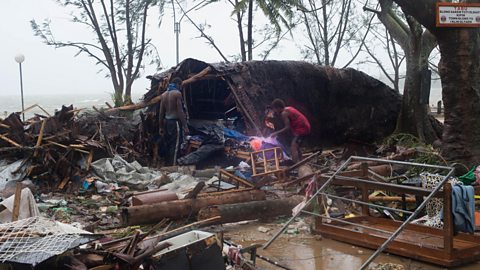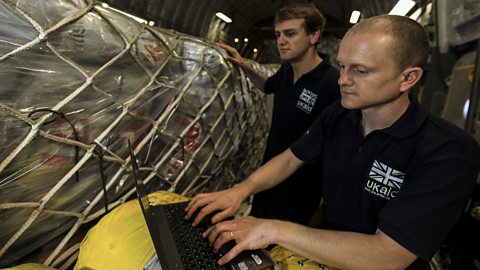Extreme low pressure systems
Global distribution of cyclones and hurricanes
Cyclones, known as hurricanes in USA and typhoons in Asia, are violent tropical storms which occur during different seasons. They are examples of extreme low pressure systems. Hurricanes often occur at the start of the American summer from end of June until October.
How do cyclones form?
For cyclones to occur and develop, the sea temperature must be 27В°C for several weeks prior. Warm air then rapidly rises, creating low pressure. This leads to condensation and the development of large towering clouds and torrential rain. As warm moist air moves in to replace the rising air, it starts to spiral upwards towards the atmosphere. This spiral effect, from the rotation of the Earth, is known as the Coriolis effect.
Cyclone categories
Cyclones are categorised into five groups, from one, the lowest strength, to five, the strongest. In a category five cyclone, winds can exceed 300 kilometres per hour and the damage done is extreme. Property, transport structures, vegetation and infrastructure such as powerlines can be totally destroyed.
Cyclone Pam
In March 2015 Cyclone Pam devastated the island of Vanuatu in the Pacific Ocean. Pam was a category five cyclone where winds reached up to 320 kilometres per hour. Vanuatu is an extremely vulnerable remote island. National incomes are less than $3100 per year and most people are poor subsistenceBeing self-sufficient, growing your own food to feed yourself and/or family. farmers who cannot afford to build well-built houses. The Government is also unable to afford hard or soft coastal defences. Due to climate change and sea-level rise the islands are extremely vulnerable.
Location and track of Cyclone Pam
Impacts
Social
- 90 per cent of homes were destroyed leaving many homeless.
- Water supplies were contaminated and wells destroyed.
- 11 people were killed.
- Schools were destroyed.

Economic
- Agricultural fields were badly damaged with up to 80 per cent of the islandвҖҷs coffee growing crops totally ruined.
- An estimated $2.5 billion of damage was done to farming businesses.
Environmental
- Heavy rain washed nutrients from soil.
- Vegetation was flooded causing habitat loss.
Responses
Several nearby countries helped by sending emergency supplies, personnel and military support.
